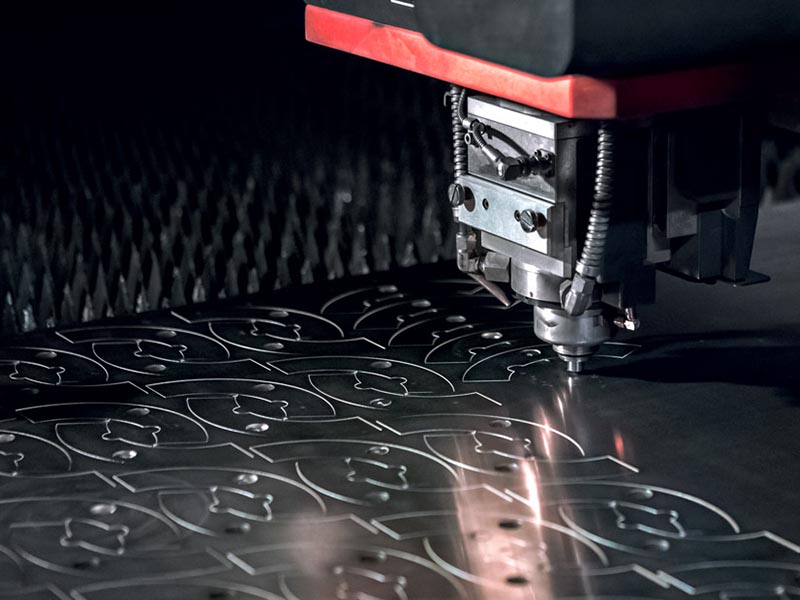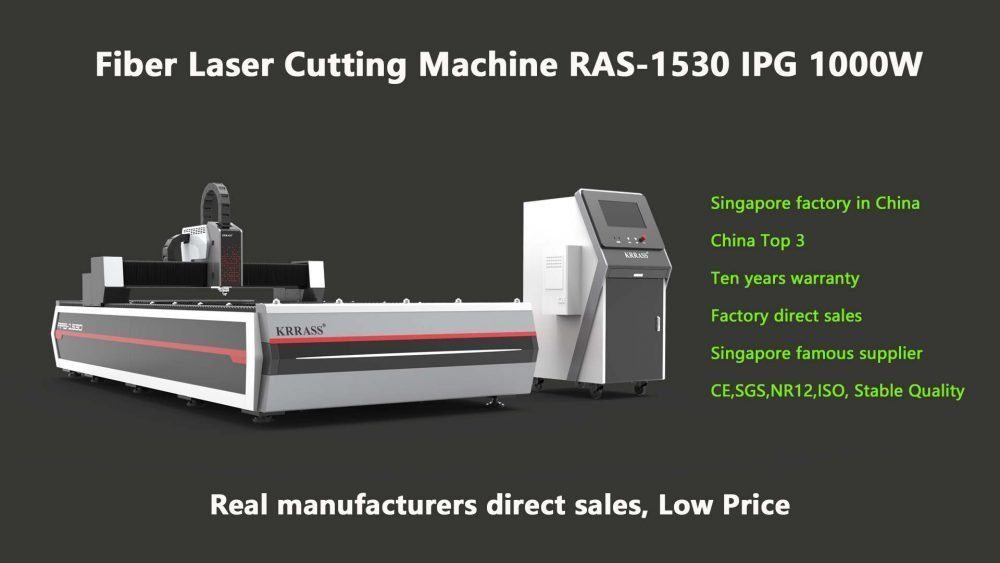1.The effect of cutting speed on cutting quality
For a given laser power density and material, the cutting speed is in accordance with an empirical formula. As long as the threshold is above the pass threshold, the cutting speed of the material is proportional to the laser power density, ie increasing the power density increases the cutting speed. The power density referred to here is related not only to the laser output power, but also to the beam quality mode. In addition, the characteristics of the beam focusing system, that is, the spot size after focusing, also have a large effect on laser cutting.

The fiber laser cutting machine cutting speed is inversely proportional to the density (specific gravity) and thickness of the material being cut. When other parameters remain the same, the factors that increase the cutting speed are: increase the power (in a certain range, such as 500 ~ 2 000W); improve the beam mode (such as from high-order mode to low-order mode until TEM00); reduce the size of the focused spot ( Such as short focal length lens focusing; cutting low initial evaporation energy materials (such as plastic, plexiglass, etc.); cutting low-density materials (such as white pine, etc.); cutting thin materials.
Especially for metal materials, the laser cutting speed can have a relative adjustment range while maintaining other process variables while maintaining a satisfactory cutting quality. This adjustment range is slightly thicker than when cutting thin metal. width. Sometimes, the slower cutting speed will also cause the hot melt material to ablate the surface of the mouth, making the cut surface rough.
2.The effect of focus position adjustment on cutting quality
Since the laser power density has a great influence on the cutting speed, the choice of lens focal length is an important issue. After the laser beam is focused, the spot size is proportional to the focal length of the lens. After the beam is focused by the short focal length lens, the spot size is small, and the power density at the focus is high, which is good for material cutting. However, its shortcoming is that the depth of focus is very short and the adjustment margin is adjusted. Small, generally suitable for high-speed cutting of thin materials. Since the telephoto long lens has a wide focal depth, it is suitable for cutting thick workpieces as long as it has sufficient power density.
After determining which focal length lens to use, the relative position of the focus to the surface of the workpiece is particularly important to ensure the quality of the cut. Due to the high power density at the focus, in most cases, the focus position at the time of cutting is just at the surface of the workpiece, or slightly below the surface. Ensuring a constant relative position of the focus to the workpiece throughout the cutting process is an important condition for obtaining a stable cutting quality. Sometimes, the lens is heated due to poor cooling and causes a change in focal length, which requires timely adjustment of the focus position.
When the focus is in a better position, the slit is smaller and the efficiency is higher, and the better cutting speed can obtain better cutting results.
In most applications, the beam focus is adjusted just below the nozzle. The distance between the nozzle and the surface of the workpiece is generally about 1.5 mm.
3.Influence of auxiliary gas pressure on cutting quality
In general, auxiliary gas is required for material cutting, and the problem mainly involves the type and pressure of the auxiliary gas. Typically, the auxiliary gas is ejected coaxially with the laser beam, protecting the lens from contamination and blowing away the slag at the bottom of the cutting zone. For non-metallic materials and some metallic materials, compressed air or inert gas is used to treat the melted and evaporated materials while suppressing excessive burning of the cutting zone.
For most metal laser cutting, reactive gas (as long as O2) is used to form an oxidative exothermic reaction with the hot metal. This additional heat can increase the cutting speed by 1/3 to 1/2.
Gas pressure is an extremely important factor in ensuring an auxiliary gas. When cutting thin materials at high speeds, higher gas pressure is required to prevent slag from sticking on the back of the cut (the hot slag will also damage the trim on the workpiece). When the thickness of the material is increased or the cutting speed is slow, the gas pressure should be appropriately lowered. In order to prevent the plastic trimming from being frosted, it is also preferable to cut at a lower gas pressure.
Laser cutting practice shows that when the assist gas is oxygen, its purity has a significant impact on the quality of the cut. A 2% reduction in oxygen purity reduces the cutting speed by 50% and results in significantly worse cut quality.
Learn more about our products, please visit and subscribe to our Youtube channel




